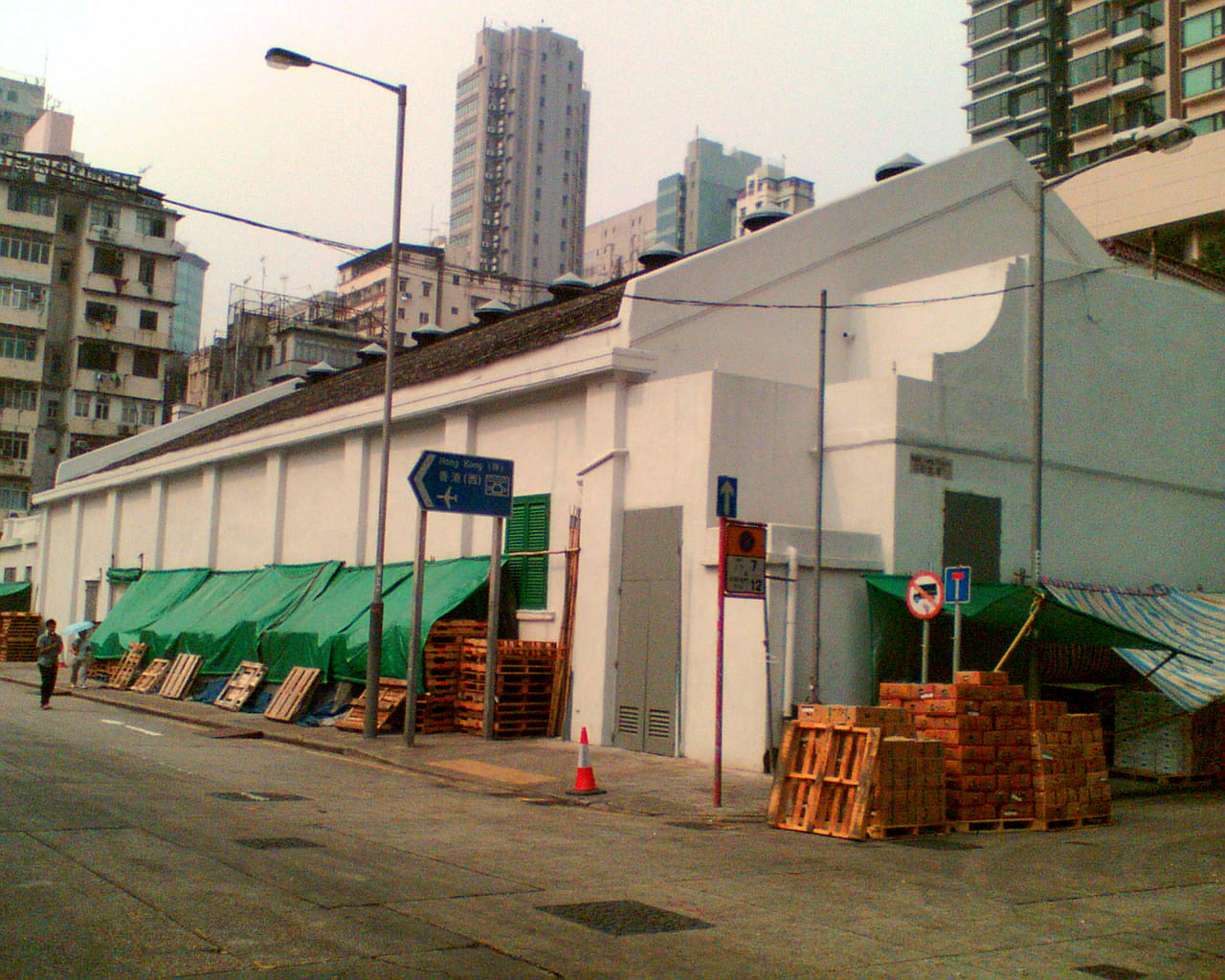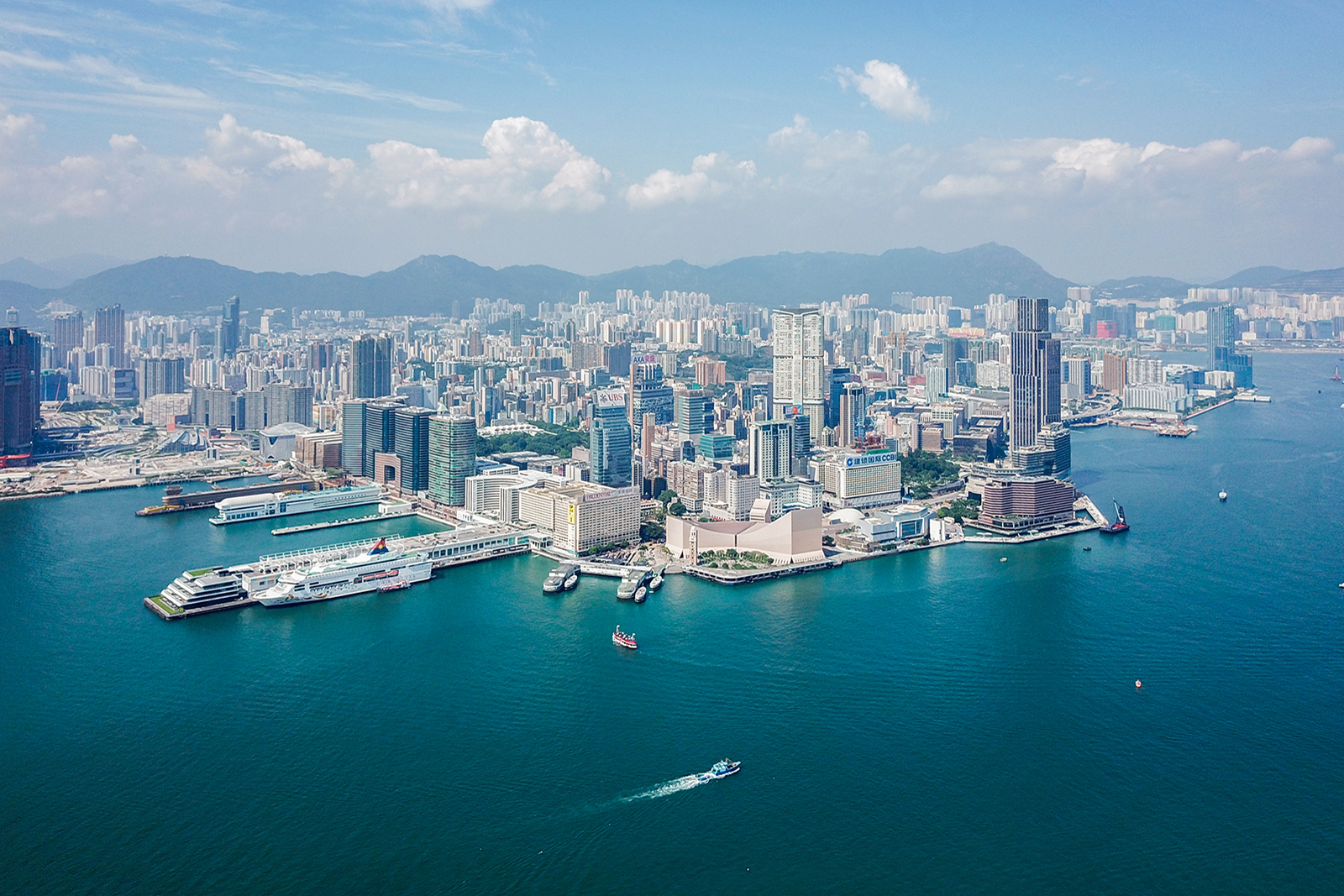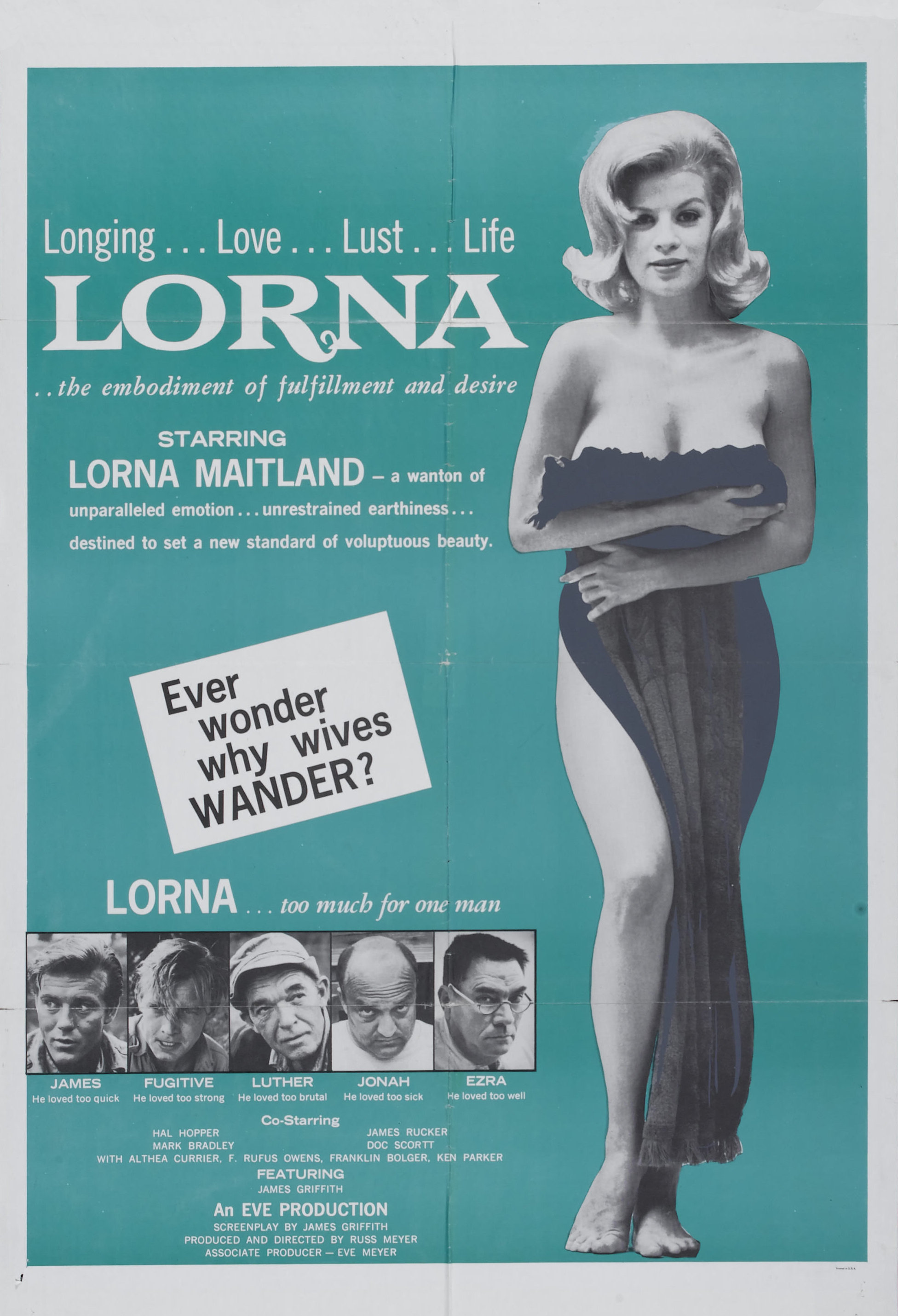|
Yau Ma Tei Theatre
Yau Ma Tei Theatre, sometimes transliterated as "Yaumati Theatre"), once the largest theatre in Kowloon, is located at the junction of Waterloo Road and Reclamation Street, in Yau Ma Tei, Hong Kong. It is classified as " Grade II Historic Building" It is the only remaining pre-World War II theatre in Kowloon. It was recently converted into a venue for Cantonese opera. Another historical structure, Yau Ma Tei Fruit Market is adjacent to the theatre, across Reclamation Street. Yau Ma Tei area Situated in the south of Kowloon, Yau Ma Tei ( or ) was once a village and is now one of the most historic areas in Hong Kong. Before British rule of Kowloon in 1860, Yau Ma Tei was known in historical documents by the name of Kwun Chung with Tanka fisherman clustering around its beach and bay. Today, after many reclamation attempts by the Hong Kong Government, a harbour still stands which is used for the fishing industry. Yau Ma Tei is also famous for its Typhoon Shelter and seafood ... [...More Info...] [...Related Items...] OR: [Wikipedia] [Google] [Baidu] |
Waterloo Road, Hong Kong
Waterloo Road is one of the principal north-south thoroughfares of Kowloon, Hong Kong. It stretches from Yau Ma Tei to Kowloon Tong. Location The road starts in the west at the intersection with Lai Cheung Road and Ferry Street, and runs east past Nathan Road. It then runs on a northeast-southwest alignment through the Yau Ma Tei and Ho Man Tin until the intersection with Princess Margaret Road and Argyle Street. The road then takes another turn and runs north through Kowloon Tong, leading towards the Lion Rock Tunnel. History Waterloo Road was named to commemorate the Battle of Waterloo. It was laid out in the early 20th century. The stretch of the road through Kowloon Tong was built in 1922 as part of the plans to develop the area. This portion of the road was designated as part of Hong Kong's Route 1 in 1974, and is the only part of Route 1 which features several intersections without grade separation. Features Kwong Wah Hospital, Wah Yan College, Kowloon, Maryknoll Con ... [...More Info...] [...Related Items...] OR: [Wikipedia] [Google] [Baidu] |
Tsim Sha Tsui
Tsim Sha Tsui, often abbreviated as TST, is an list of areas of Hong Kong, urban area in southern Kowloon, Hong Kong. The area is administratively part of the Yau Tsim Mong District. Tsim Sha Tsui East is a piece of land reclaimed from the Hung Hom Bay now east of Tsim Sha Tsui. The area is bounded north by Austin Road and in the east by Hong Chong Road and Cheong Wan Road. Geographically, Tsim Sha Tsui is a cape (geography), cape on the tip of the Kowloon Peninsula pointing towards Victoria Harbour, opposite Central, Hong Kong, Central. Several villages had been established in this location before Kowloon Convention of Peking, was ceded to the British Empire in 1860. The name ''Tsim Sha Tsui'' in Cantonese language, Cantonese means ''sharp spit (landform), sandspit''. It was also known as Heung Po Tau (), i.e. a port for exporting Aquilaria sinensis, incense tree. Tsim Sha Tsui is a Tourism in Hong Kong, major tourist hub in Hong Kong, with many high-end shops, bars, pubs an ... [...More Info...] [...Related Items...] OR: [Wikipedia] [Google] [Baidu] |
Antiquities And Monuments Office
The Antiquities and Monuments Office (AMO) was established in 1976 under the Antiquities and Monuments Ordinance to protect and preserve Hong Kong's historic monuments. Housed in the Former Kowloon British School, the AMO is responsible for identifying, recording and researching buildings and items of historical interest, as well as organising and coordinating surveys and archaeological excavation, excavations in areas of archaeological significance. The Commissioner for Heritage's Office under the Development Bureau of the Government of Hong Kong, Hong Kong government currently manages the Office. Relationship with other government agencies The AMO is the executive arm of the Antiquities Authority, a portfolio of the Secretary for Development. The AMO also offers secretarial and executive assistance to the Antiquities Advisory Board (AAB) and executes the advice made by the AAB, including the execution of the Chief Executive's decision to declare Declared monuments of Hong Ko ... [...More Info...] [...Related Items...] OR: [Wikipedia] [Google] [Baidu] |
Golden Princess Amusement Co
Golden means made of, or relating to gold. Golden may also refer to: Places United Kingdom *Golden, in the parish of Probus, Cornwall * Golden Cap, Dorset *Golden Square, Soho, London *Golden Valley, a valley on the River Frome in Gloucestershire * Golden Valley, Herefordshire United States *Golden, Colorado, a town West of Denver, county seat of Jefferson County * Golden, Idaho, an unincorporated community * Golden, Illinois, a village * Golden Township, Michigan *Golden, Mississippi, a village *Golden City, Missouri, a city *Golden, Missouri, an unincorporated community * Golden, Nebraska, ghost town in Burt County * Golden Township, Holt County, Nebraska *Golden, New Mexico, a sparsely populated ghost town * Golden, Oregon, an abandoned mining town *Golden, Texas, an unincorporated community * Golden, Utah, a ghost town * Golden, Marshall County, West Virginia, an unincorporated community Elsewhere *Golden, County Tipperary, Ireland, a village on the River Suir * Golden Vale ... [...More Info...] [...Related Items...] OR: [Wikipedia] [Google] [Baidu] |
Orange Sky Golden Harvest
Orange Sky Golden Harvest (OSGH) () , previously known as Golden Harvest () from 1970 to 2009, is a film production, distribution, and exhibition company based in Hong Kong. It dominated Hong Kong cinema box office sales from the 1970s to the 1980s,Chu, Yingchi. 003(2003). Hong Kong Cinema: Coloniser, Motherland and Self. Routledge. and played a major role in introducing Hong Kong action films to the world, especially those by Bruce Lee (Concord Production Inc.), Jackie Chan, and Sammo Hung. History Notable names in the company include its founders, the veteran film producers Raymond Chow () and Leonard Ho (). Chow and Ho were executives with Hong Kong's top studio Shaw Brothers but left in 1970 to form their own studio. They succeeded by taking a different approach from the highly centralised Shaw model. Golden Harvest contracted with independent producers and gave talent more generous pay and greater creative freedom. Some filmmakers and actors from Shaw Brothers defect ... [...More Info...] [...Related Items...] OR: [Wikipedia] [Google] [Baidu] |
Shaw Brothers Studio
Shaw Brothers (HK) Ltd. () was the largest film production company in Hong Kong, and operated from 1925 to 2011. In 1925, three Shaw brothers— Runje, Runme, and Runde—founded Tianyi Film Company (also called "Unique") in Shanghai, and established a film distribution base in Singapore, where Runme and their youngest brother, Run Run Shaw, managed the precursor to the parent company, Shaw Organisation. Runme and Run Run took over the film production business of its Hong Kong-based sister company, Shaw & Sons Ltd, and in 1958 a new company, "Shaw Brothers," was set up. In the 1960s, Shaw Brothers established what was once the largest privately owned studio in the world, Movietown. The company's most famous works include ''The Love Eterne'', ''The One-Armed Swordsman'', ''Come Drink with Me'', ''King Boxer'', ''Executioners from Shaolin'', '' Five Deadly Venoms'', and ''The 36th Chamber of Shaolin''. Over the years the film company produced around 1,000 films, some ... [...More Info...] [...Related Items...] OR: [Wikipedia] [Google] [Baidu] |
Japanese Occupation Of Hong Kong
The Imperial Japanese occupation of Hong Kong began when the Governor of Hong Kong, Mark Aitchison Young, Sir Mark Young, surrendered the British Crown colony of British Hong Kong, Hong Kong to the Empire of Japan on 25 December 1941. The surrender occurred after Battle of Hong Kong, 18 days of fierce fighting against the overwhelming Imperial Japanese Army, Japanese forces that had invaded the territory.Snow, Philip. [2004] (2004). The fall of Hong Kong: Britain, China and the Japanese occupation. Yale University Press. , .Mark, Chi-Kwan. [2004] (2004). Hong Kong and the Cold War: Anglo-American relations 1949–1957. Oxford University Press publishing. , . p 14. The occupation lasted for three years and eight months until Surrender of Japan, Japan surrendered at the end of the World War II, Second World War. The length of this period (, ) later became a metonym of the occupation. Background Imperial Japanese invasion of China During the Imperial Japanese military's Second ... [...More Info...] [...Related Items...] OR: [Wikipedia] [Google] [Baidu] |
Pacific War
The Pacific War, sometimes called the Asia–Pacific War, was the theater of World War II that was fought in Asia, the Pacific Ocean, the Indian Ocean, and Oceania. It was geographically the largest theater of the war, including the vast Pacific Ocean theater, the South West Pacific theater, the Second Sino-Japanese War, and the Soviet–Japanese War. The Second Sino-Japanese War between the Empire of Japan and the Republic of China had been in progress since 7 July 1937, with hostilities dating back as far as 19 September 1931 with the Japanese invasion of Manchuria. However, it is more widely accepted that the Pacific War itself began on 7 December (8 December Japanese time) 1941, when the Japanese simultaneously invaded Thailand, attacked the British colonies of Malaya, Singapore, and Hong Kong as well as the United States military and naval bases in Hawaii, Wake Island, Guam, and the Philippines. The Pacific War saw the Allies pitted against Japan, the latter ai ... [...More Info...] [...Related Items...] OR: [Wikipedia] [Google] [Baidu] |
Erotic Film
Sex in film, the presentation of aspects of sexuality in film, specially human sexuality, has been controversial since the development of the medium. Films which display or suggest sexual behavior have been criticized by religious groups or have been banned or censored by governments, although attitudes have changed much along the years and a more permissive social environment has developed in certain parts of the world, notably in Europe, North America, Australia and New Zealand. In countries with a film rating system, films which contain explicit sex scenes typically receive a restricted classification. Nudity in film may be regarded as sexual or as non-sexual. An erotic film is usually a film that has an erotic quality, meaning that it may arouse sexual feelings, even if the stated or suggested intention of the film maker is to induce philosophical contemplation concerning the aesthetics of sexual desire, sensuality and romantic love. Love scenes, erotic or not, have been p ... [...More Info...] [...Related Items...] OR: [Wikipedia] [Google] [Baidu] |
Engineer's Office Of The Former Pumping Station
The Engineer's Office of the Former Pumping Station, Water Supplies Department, sometimes called "The Red Brick House", is located at No. 344 Shanghai Street, in Yau Ma Tei, Hong Kong. It has been classified as a Grade I historical building since 2000 by the Antiquities Advisory Board in view of its historical and architectural merit.Hong Kong Antiquities and Monuments Office, HKSAR Government. ''Brief Information on Proposed Grade I Items.'' pp. 346–347 Retrieved 13 October 2009. [...More Info...] [...Related Items...] OR: [Wikipedia] [Google] [Baidu] |
Public Square Street
Public Square Street (; formerly ) is a street in Yau Ma Tei, Kowloon, Hong Kong. Location The street runs in an east-west alignment from Cliff Road to Ching Ping Street (), meeting Nathan Road, Temple Street, Shanghai Street, Reclamation Street and Canton Road in its course. History The street was built in 1887. Its original name in Chinese was (''Kung Chong Sze Fong Kai'' in Cantonese), a mistranslation that resulted from the word ''square'' being misinterpreted as a geometric shape. The more accurate translation of (''Chung Fong Kai'' in Cantonese language) was adopted in 1976. A large-scale reclamation was carried out in Yau Ma Tei between 1900 and 1904, between today's Reclamation Street and Ferry Street. Public Square Street was extended to Ferry Street accordingly. The end of the street, near present-day Ferry Street, the Yau Ma Tei Ferry Pier was one of main pier for ferry transport across Victoria Harbour between Kowloon and Hong Kong Island. The ferry pier w ... [...More Info...] [...Related Items...] OR: [Wikipedia] [Google] [Baidu] |
Broadway Cinematheque
Broadway Cinematheque () is a cinema in Yau Ma Tei, Hong Kong, run by Broadway Circuit. Located in Prosperous Garden, a public housing estate, the cinema screens a wider spectrum of films including independent and art films than other cinemas in Hong Kong. The cinema hosts four houses with 476 seats (115 normal seats + 4 wheelchair seats per house). It also has a book store, Kubrick, which specializes in books about films, and has a café adjacent to it. History Broadway Cinematheque's building was designed by Gary Chang, who founded the EDGE Design Institute in 1994. The cinema opened on 20 November 1996, the day of the Garley Building fire in the adjoining Jordan neighbourhood, and as a result business on its first day was quite poor. The cinema's initial strategy of showing only art film proved to be unsustainable, and so around 2000 it began showing mainstream films on two of its four screens. It is owned by , which according to Broadway Cinematheque director Gary Mak is ... [...More Info...] [...Related Items...] OR: [Wikipedia] [Google] [Baidu] |







.jpg)